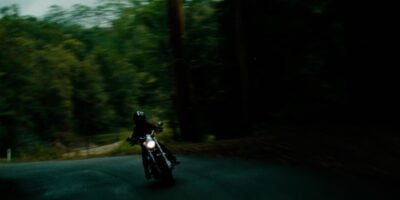The godparent of the American independent cinema movement is a title that has been messily bestowed on a whole heap of auteurs, with everyone from John Cassavetes to Robert Redford thrust up as figures deserving of the accolade. And yet although such filmmakers have had their own unique impact on the annals of indie cinema, perhaps none have left a distinct a mark as one John Carpenter, the horror master who has set the template for four decades of American cinema.
Carpenter’s genius has always laid in his talent for crafting closed loops. Carpenter’s films are often literally small – think Halloween, which goes down mostly over the space of a couple of suburban blocks, or Escape From New York, which makes the drawing of distinct spatial boundaries part of the plot – but massive in terms of ideas.
It was a formula that he mastered early: his first film, Dark Star, is a miniature sci-fi dark comedy that’s also somehow about finding purpose in a hostile world lacking objective moral sense. And even his bigger works, masterful splotches of pain and paranoia like The Thing, have a sense of geographical control that brings to mind a stage play rather than a major American film.
Although Carpenter’s career has fluctuated between science fiction, horror, and action comedy, his modus operandi has largely stayed the same: he is a director single-minded in intent, a man who scrapes every last inch of fat off his scripts before jumping into filming.
Such an approach was born out of a need to keep budgets down – Dark Star, Assault On Precinct 13, and Halloween cost $60,000, $100,000 and $300,000 respectively – but it has evolved into his director’s trademark; the skill that makes him so important as a filmmaker. Save his one slight glaring artistic disappointment, the uneven Ghosts Of Mars, a Carpenter film is as sharp as a needle. No line is wasted; no shot is expendable.
Watch the trailer for Halloween below
This then is Carpenter’s impact on American independent cinema, a rupturing of the norm that can be felt to this day. Carpenter’s ambition strained against the limit of his budgets in a way that was thrilling rather than frustrating. His films imply so much more than they show, hinting away at larger worlds; suggesting entire lifetimes and universes without ever having to depict them. They are films that burst beyond their own margins.
Love Music?
Get your daily dose of metal, rock, indie, pop, and everything else in between.
To glance through even the last few years of independent cinema is to see the longevity of Carpenter’s impact. Some homages to the man’s work are more obvious than others: Jeremy Saulnier’s excellent Green Room takes inspiration from both Carpenter’s closed loop set-ups, and his penchant for taboo-shattering bursts of violence, whereas Yann Demange’s lauded behind enemy lines thriller ’71 feels like a veritable Assault On Precinct 13 remake, shot through with the same sense of mournful anger and politicised hopelessness.
But there are other, subtler ancestors of Carpenter’s legacy dotted about. Ben Wheatley’s Free Fire reeks of Carpentarian horror and slapstick; Good Time takes the grunge-splattered extremity of They Live and grounds it somewhere significantly more real; while Trey Edward Shults’ It Comes At Night is a film as sick and pale as The Thing.
“In France, I’m an auteur,” Carpenter once famously said. “In Germany, a filmmaker; in Britain; a genre film director; and, in the USA, a bum.” That might have been true once. But these days, in the USA, Carpenter is a formative figure; a director whose legacy can no longer be ignored.

































